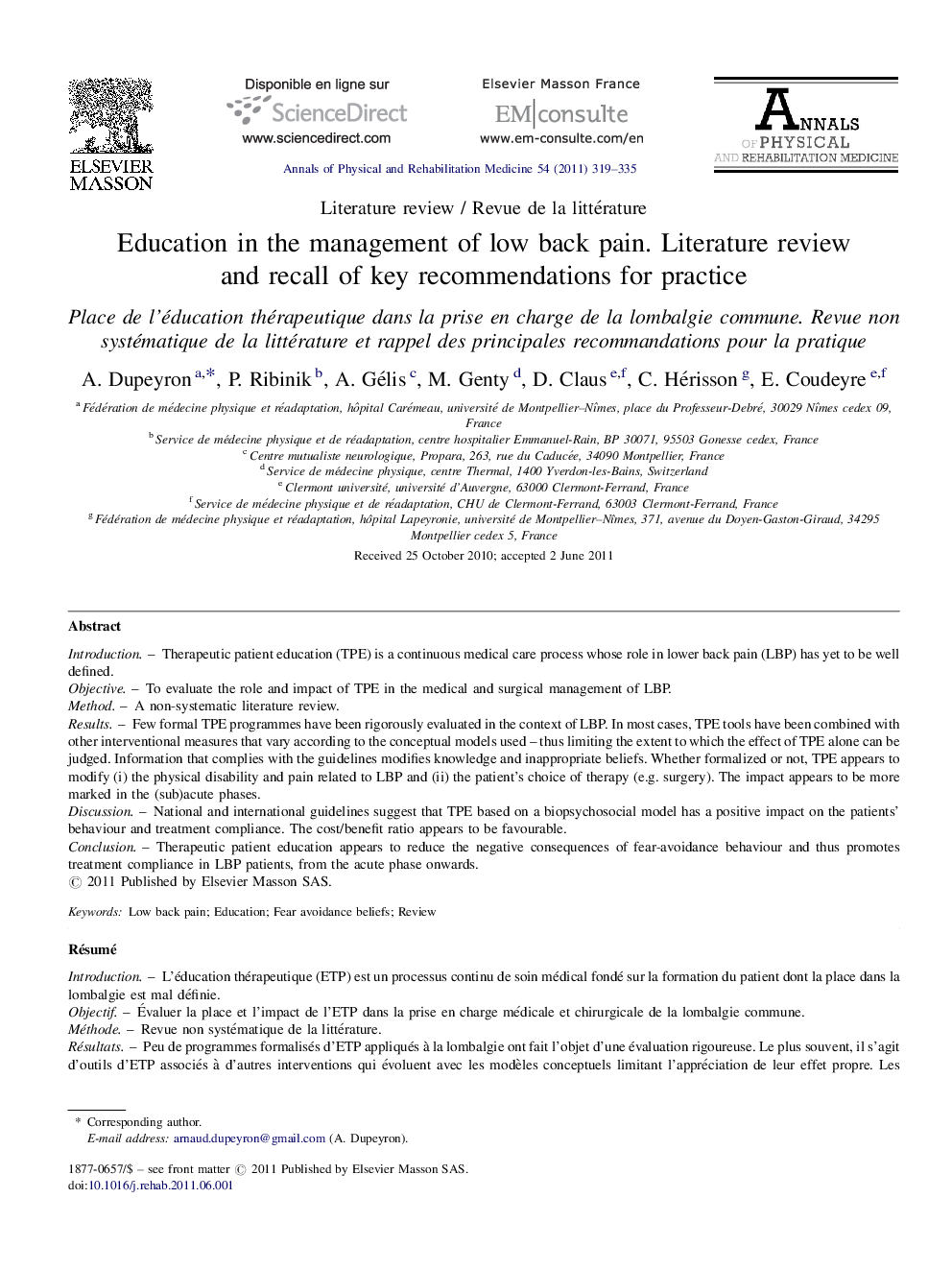| Article ID | Journal | Published Year | Pages | File Type |
|---|---|---|---|---|
| 4041080 | Annals of Physical and Rehabilitation Medicine | 2011 | 17 Pages |
IntroductionTherapeutic patient education (TPE) is a continuous medical care process whose role in lower back pain (LBP) has yet to be well defined.ObjectiveTo evaluate the role and impact of TPE in the medical and surgical management of LBP.MethodA non-systematic literature review.ResultsFew formal TPE programmes have been rigorously evaluated in the context of LBP. In most cases, TPE tools have been combined with other interventional measures that vary according to the conceptual models used – thus limiting the extent to which the effect of TPE alone can be judged. Information that complies with the guidelines modifies knowledge and inappropriate beliefs. Whether formalized or not, TPE appears to modify (i) the physical disability and pain related to LBP and (ii) the patient's choice of therapy (e.g. surgery). The impact appears to be more marked in the (sub)acute phases.DiscussionNational and international guidelines suggest that TPE based on a biopsychosocial model has a positive impact on the patients’ behaviour and treatment compliance. The cost/benefit ratio appears to be favourable.ConclusionTherapeutic patient education appears to reduce the negative consequences of fear-avoidance behaviour and thus promotes treatment compliance in LBP patients, from the acute phase onwards.
RésuméIntroductionL’éducation thérapeutique (ETP) est un processus continu de soin médical fondé sur la formation du patient dont la place dans la lombalgie est mal définie.ObjectifÉvaluer la place et l’impact de l’ETP dans la prise en charge médicale et chirurgicale de la lombalgie commune.MéthodeRevue non systématique de la littérature.RésultatsPeu de programmes formalisés d’ETP appliqués à la lombalgie ont fait l’objet d’une évaluation rigoureuse. Le plus souvent, il s’agit d’outils d’ETP associés à d’autres interventions qui évoluent avec les modèles conceptuels limitant l’appréciation de leur effet propre. Les informations conformes aux recommandations modifient les connaissances et les croyances erronées. Formalisée ou non, l’ETP semble modifier l’incapacité et la douleur liées à la lombalgie et les choix thérapeutiques des patients (chirurgie). L’impact semble plus marqué dans les phases (sub)aiguës.DiscussionLes recommandations nationales et internationales suggèrent que l’ETP basée sur le modèle biopsychosocial modifie favorablement le comportement des patients et leur adhérence au traitement. Le rapport coût–bénéfice semble avantageux.ConclusionL’ETP semble limiter au moins les conséquences négatives de comportements inadaptés limitant l’adhérence aux traitements des patients lombalgiques dès la phase aiguë.
